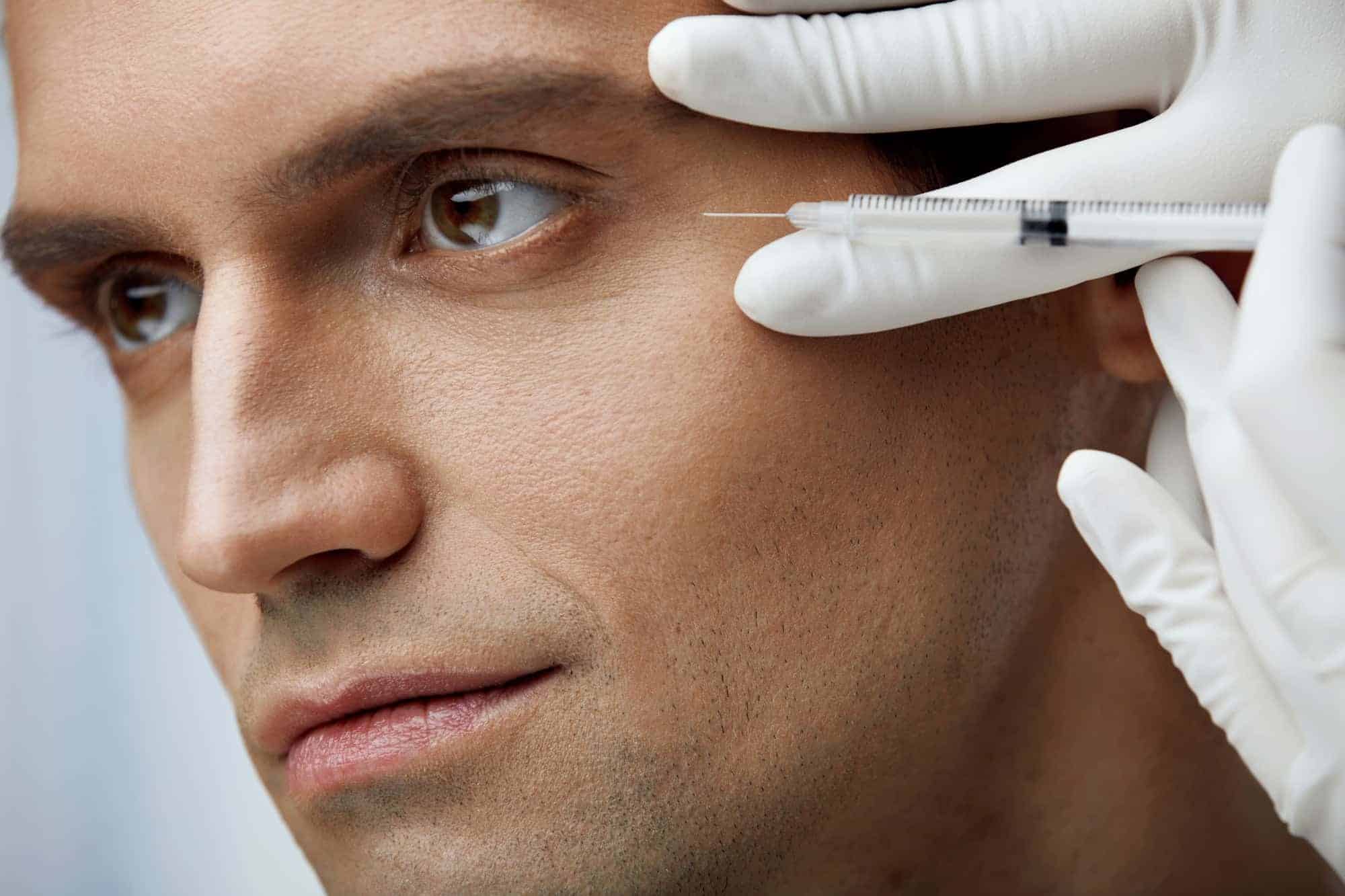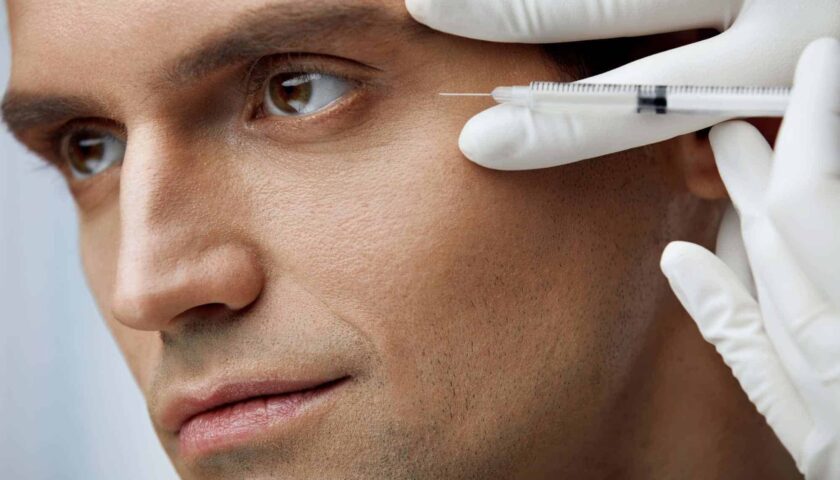
Semaglutide, sold under the trade name Ozempic, is an injectable drug approved for treating type 2 diabetes. Recently, it was introduced under the name Wegovy, specifically to help obese people in their efforts to lose extra weight.
Ozempic (Wegovy) gained significant popularity as a weight-loss drug, although the FDA first approved it for treating type 2 diabetes and reducing the risk of cardiovascular disease. Wegovy/Ozempic is a very effective pharmacological tool for weight loss: it helps reduce the feeling of hunger and food cravings, which will have patients eating smaller portions and feeling full longer. But even though Ozempic has been shown to work effectively, it is essential to be aware of its potential risks and negative consequences.
What Are the Side Effects of Ozempic?
One of the potential risks of Ozempic is the development of gallstones and related problems, such as pancreatitis. Sudden weight loss (like the one Ozempic can cause) can increase the risk of gallstones. In addition, using Ozempic can lead to sagging skin and vitamin deficiency if a person does not get enough nutrients in their diet.
It’s also important to remember that GLP-1 drugs like Ozempic work differently for everyone, and some people may experience more severe side effects than others. Most users tolerate GLP-1 drugs quite well, but some may experience moderate to severe nausea, vomiting, abdominal pain, etc.
As a rule, these symptoms appear in the first weeks of treatment, and to minimize them, patients should always take the smallest effective dose. It is advised to begin from the lowest dose (0.25 mg) and slowly increase it every four weeks or every eight if the increased dosage is not well tolerated and causes symptoms originating from the gastrointestinal tract.
Common adverse symptoms after taking Ozempic include:
- Nausea;
- Vomiting;
- Diarrhea;
- Abdominal pain;
- Constipation;
- Headache;
- Dizziness;
- Fatigue.
Some of these side effects are similar to symptoms of an eating disorder and can seriously affect the patient’s mental health.
In addition to those potential risks and adverse reactions, Ozempic can cause serious side effects such as:
- C-cell tumors of the thyroid gland;
- Pancreatitis;
- Diabetic retinopathy;
- Allergic reactions;
- Kidney problems;
- Low blood sugar.
And, of course, a famous negative consequence of using Ozempic as a weight-loss drug is the development of the so-called “Ozempic face.”
What Is Ozempic Face?
Ozempic face is a term used to describe the rapid aging of the face due to extreme weight loss. This occurrence is most often seen in patients who take Ozempic unsupervised for vain weight loss and not to treat actual obesity or type 2 diabetes. This effect is caused not by the drug itself but by the rapid weight loss after taking it.
Any significant and relatively rapid weight loss can potentially lead to the appearance of loose and sagging skin, wrinkles, and other signs that can create the impression that a person has aged.
With active weight loss, the amount of subcutaneous adipose tissue decreases, and excess skin and ligaments remain stretched. The skin ceases to be smooth and elastic, wrinkles appear and deepen, and the face begins to sag without proper support.
Facial skin can restore itself after losing some weight. However, after a sharp decrease in weight, signs of ptosis show up on the face:
- The fat layer becomes thinner;
- The skin does not have time to tighten so quickly;
- Folds and furrows appear.
This happens because the body does not have the strength to tighten the skin due to an insufficient supply of trace elements. All the forces are spent on maintaining the body’s vital functions so that a person can breathe, have a heartbeat, and move. So the body will need external help to fight face changes after weight loss.
Apart from modern technologies of targeted fat loss or surgical operations, no diet or weight loss drug can be directed to only one area of the body (for example, the face), so the same changes can happen in other areas – we call this the Ozempic body.
How Does Ozempic Affect the Face?
Fat loss on the face leads to loss of volume, the main aspect of facial aging. The resulting sagging of the skin and wrinkles aggravate this phenomenon even more. Reducing the calorie content of the diet also leads to a decrease in protein consumption, which is extremely important for maintaining the health and youth of the skin since proteins make up more than 80% of the dry weight of the skin.
Middle-aged and older people often experience noticeable aging when losing weight, as the fat in their body partially counteracts the loss of volume due to the decrease in the amount of dermal proteins that naturally occurs with aging.
Finally, those who take semaglutide off-label to more easily “lose a couple of kilograms” and start from an almost ideal body mass index are exposed to a greater risk of reducing fat reserves in areas where they shouldn’t lose them. Fat loss does not occur in these areas until the body’s fat percentage falls below a particular number. An example is the buccal fat pad located in the depth of the cheek, which can cause an emaciated appearance.
How to Avoid Facial Issues
First of all, if weight loss is facilitated by drugs, the patient must be under the supervision of a qualified medical specialist and follow a proper diet to avoid nutritional imbalances, for example, a lack of protein.
Gradual weight loss gives the body more time to adapt to changes and allows the skin to shrink to some extent, although excess skin is usually inevitable in obese patients with significant weight loss.
In addition, skin moisturizing routines, protection from direct sunlight, giving up smoking, and using appropriate cosmetics and skin care products can also mitigate the aging effect of semaglutide to some extent.
Exercising and building muscle mass can help compensate for volume loss and add some structure and firmness to many body areas, although it won’t affect the face.
How To Treat The Ozempic Face?
The main task of the cosmetologist in the case of Ozempic face is to tighten fatty structures, ligaments, and skin. There are several non-invasive, minimally invasive, and surgical methods of combating the consequences of rapid and significant weight loss, for example:
- Microcurrent therapy increases skin and muscle tone and improves blood circulation. Microcurrents can be combined with mesotherapy (vitamin cocktails) and massage.
- Various types of HA-based dermal fillers and thread lifting are used to restore the volume loss of the cheekbones, nasolabial fold, and other areas;
- Volume replacement and stimulation of collagen production using biostimulating fillers such as Radiesse (CaHA) or Sculptra (PLLA);
- Volume replenishment with the help of autologous fat transplantation;
- Stimulation of fibroblasts to produce more dermal proteins, such as elastin, collagen, and hyaluronic acid, by administering platelet-rich plasma (PRP) or Polydeoxyribonucleotide (PDRN);
- Skin tightening using medical devices such as Ulthera (ultrasound) or Thermage (radio frequency);
- Skin lifting and tightening with the help of fractional lasers or Ellacor, the new minimally invasive medical device, removes micronuclei of excess skin, resulting in something like a “fractional facelift.”
A surgical facelift may be required in more severe cases of sagging skin and tissues.
Conclusion
After rapid weight loss, the skin may undergo certain changes that vary depending on factors such as the amount of weight lost, the speed of weight loss, age, genetics, and overall skin elasticity. Ozempic face is a side effect that makes many people look older after taking diabetes or weight loss medication Ozempic (Wegovy).
Various treatments can improve facial side effects associated with the Ozempic face, but in extreme cases, plastic surgery might be the only option that can help. The best strategy for patients is to prevent such situations by controlling the speed of their weight loss, taking medications only under a doctor’s supervision, and supporting the entire process with a healthy lifestyle, exercise, and a balanced diet.
FAQ
Does Ozempic cause bruising?
Bruising is a typical and expected side effect that can occur after injections, including Ozempic. It results from the leakage of blood from blood vessels that are affected during the injection process.
Not everyone experiences bruising after injections, but some individuals may tend to bruise easily.
What are the facial effects of Ozempic?
Individuals may experience increased wrinkles or a hollowed facial appearance while losing weight with the help of a medication like Ozempic. The loss of facial volume can accentuate facial features and contribute to a gaunt-like look of the face.
Does Ozempic cause an aging effect?
Besides the changes in the body shape, Ozempic (Wegovy) induces relatively rapid weight loss in the face area. Because of that, the skin on a patient’s face or other body areas could appear wrinkly or sagging, making the person appear aged and exhausted.
But these symptoms aren’t provoked by Ozempic; instead, it is the weight loss causing the face changes.
References
Food and Drug Administration. (2021). FDA approves new drug treatment for chronic weight management [Press release].
https://www.fda.gov/news-events/press-announcements/fda-approves-new-drug-treatment-chronic-weight-management-first-2014.
- Wilding, J. P., Batterham, R. L., Davies, M., Van Gaal, L. F., Kandler, K., Konakli, K., Lingvay, I., McGowan, B. M., Oral, T. K., Rosenstock, J., Wadden, T. A., Wharton, S., Yokote, K., Kushner, R. F., & Group, S. (2022). Weight regain and cardiometabolic effects after withdrawal of semaglutide: The STEP 1 trial extension. Diabetes, Obesity & Metabolism, 24(8), 1553-1564. https://doi.org/10.1111/dom.14725.
Food and Drug Administration. (2021). FDA approves new drug treatment for chronic weight management [Press release].
https://www.fda.gov/news-events/press-announcements/fda-approves-new-drug-treatment-chronic-weight-management-first-2014.
Ozempic (semaglutide) injection for subcutaneous use. (2022).
https://www.accessdata.fda.gov/drugsatfda_docs/label/2022/209637s012lbl.pdf
Smits, M. M., et al. (2021). Safety of semaglitude.
https://www.frontiersin.org/articles/10.3389/fendo.2021.645563/full.
Shu, Y., He, X., Wu, P., Liu, Y., Ding, Y., & Zhang, Q. (2022). Gastrointestinal adverse events associated with semaglutide: A pharmacovigilance study based on FDA adverse event reporting system. Frontiers in Public Health, 10. https://doi.org/10.3389/fpubh.2022.996179.
Singh G, Krauthamer M, Bjalme-Evans M. Wegovy (Semaglutide): A New Weight Loss Drug for Chronic Weight Management. Journal of Investigative Medicine. 2022;70(1):5-13. doi:10.1136/jim-2021-001952.
Injectable aesthetics are popular due to their ability to provide noticeable results with minimal downtime compared to surgical procedures. They are versatile and can be tailored to meet individual aesthetic goals, whether it's enhancing lips, restoring facial volume, or smoothing out wrinkles. However, they should always be administered by qualified professionals to ensure safety and achieve optimal results.
Injectable aesthetics are used to enhance facial features, reduce the signs of aging, and improve overall facial symmetry and appearance.
Key types of injectable aesthetics include:
-
Dermal Fillers: These injectables are used to add volume, fill in wrinkles and folds, and enhance facial contours. They often contain substances like hyaluronic acid, collagen, or calcium hydroxylapatite, which help plump up the skin and smooth out fine lines and wrinkles.
-
Botulinum Toxin (Botox): Botulinum toxin injections temporarily relax facial muscles that cause wrinkles and lines to form. It is commonly used to treat forehead lines, frown lines between the eyebrows, and crow's feet around the eyes.
-
Collagen Stimulators: These injectables stimulate the body's own collagen production, helping to improve skin texture and firmness over time. Examples include poly-L-lactic acid (Sculptra) and calcium hydroxylapatite (Radiesse).
-
Neurotoxin Injections: Besides Botox, other neurotoxins such as Dysport and Xeomin are used similarly to reduce wrinkles and lines.





